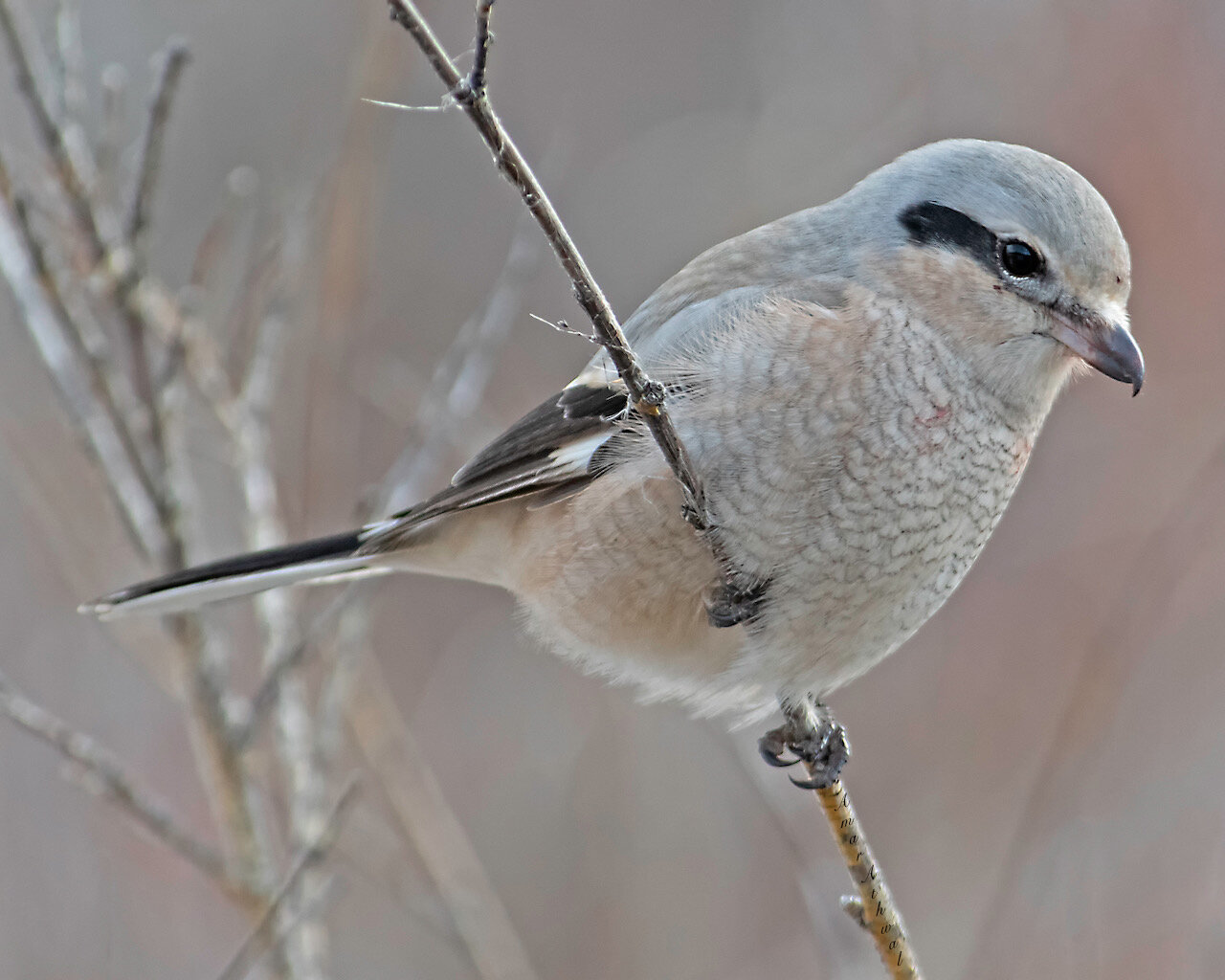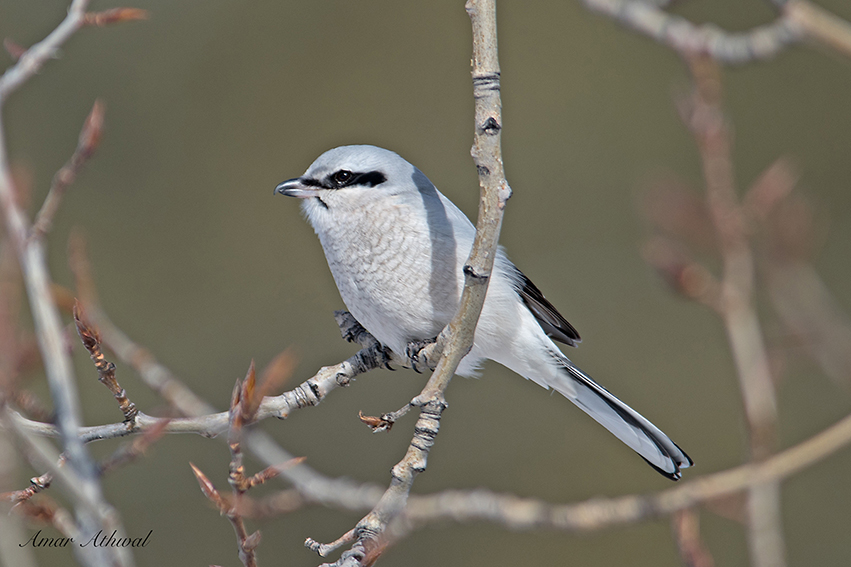This large songbird with a large round head and an equally thick neck can be spotted in Banff NP in winter. The Northern Shrikes come south to Banff in the winter as well to other parts of Canada and northern parts of the states. Breeding takes place far north, in parts of Canada and Alaska. Most songbirds do not hunt and eat animals. But the shrike does, using its toothlike spike on its upper bill to kill prey. Going after mice and birds up to the size of robins. Since they like to hold territories during winter and the male sings in late winter and early spring. A good bird to keep your eyes out for before they head back up north. This shrike I came across just as we were about to start a small hike over a month ago. It landed less than 10 meters from us, waiting for a vole to come out in the open. A few minutes later, it flew down to the ground to catch a vole. But it was far too fast for me to get the picture before it was in the woods.
Northern Shrike
Northern Shrike on the move to its next meal.
Northern Shrike
Unlike Macbeth, there is no guilt felt by the Northern Shrike. The blood stains on its forehead, bill and breast are from the prey, which it killed to survive another day and not to sit on the throne. Half an hour earlier, it had gone down into the willows, on its way back up it was showing the evidence of having consumed a meal. With no small birds in sight, small mammals like the voles were on the menu. Even if it were full from its recent meal, it was ready for the next prey and if successful it would store it until hunger returned. Even with all my layers, I could feel the cold on my face and hands after being out there watching the bird for an hour on a cold windy day. For the shrike to survive the cold days and nights, it needs to consume a certain amount of food each day. After a meal, it can’t take it for granted it will catch something when it gets hungry. Instead, the shrike is always ready to kill and save it for later. While it waited, it groomed to keep the feathers clean to maximize warmth as I made my home.
Northern Shrike
I had made several attempts to see and also to get a good image of this beautiful Northern Shrike. Much of the time involved standing in one area and then letting the bird get close enough and then hopefully get an image where the bird would pop from the background. A week before this image the bird was within 10 to 15 meters of me, but the background was too light, thanks to all the snow. So a week later it was time to try again. By now I knew where to stand, I had to deal with the cold wind hitting me from the back, but the light was good. The shrike went down into the grass near me, I stayed put. It popped up with nothing in its talons and decided to perch on a spruce tree less than ten meters from me. Perfect, with the rest of the trees and willow shrubs far enough back to give me the soft and smooth background, I got the picture.
Northern Shrike
This masked feathered friend goes by the name of Northern Shrike. Comes down to southern Canada and northern United Sates during the winter. It's a predator, feeding on birds, mammals and insects and also considered a songbird. Shrikes use their pecking skills to kill their prey and if the prey is too large to hold in their talons, they will impale them for easy eating or for snack at a later time.
Until next moment,
Amar
Northern Shrike

The Northern Shrike was sitting on the post of the fence beside the highway. Would fly down into the grass and then back up to the same or another post. I would watch it and take pictures of it. I would have liked to get closer to the bird, but from past experience I knew it would fly away. There was just clear space between us , nothing for me to hide behind to get nearer. I was happy with the pictures I got that day, next time hopefully it will be perched on a tree.
Until next moment,
Amar




